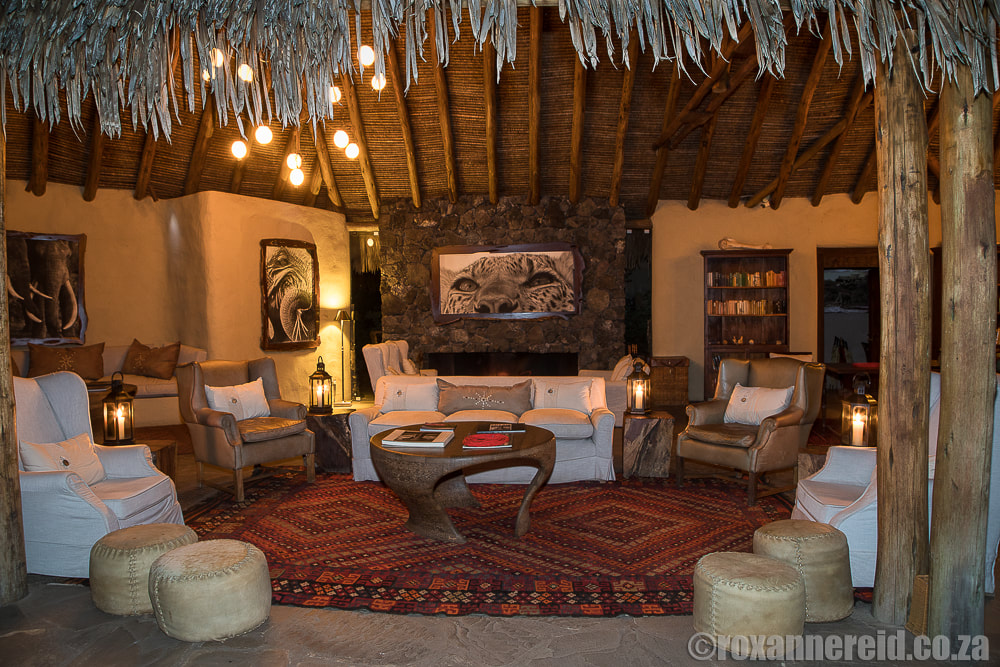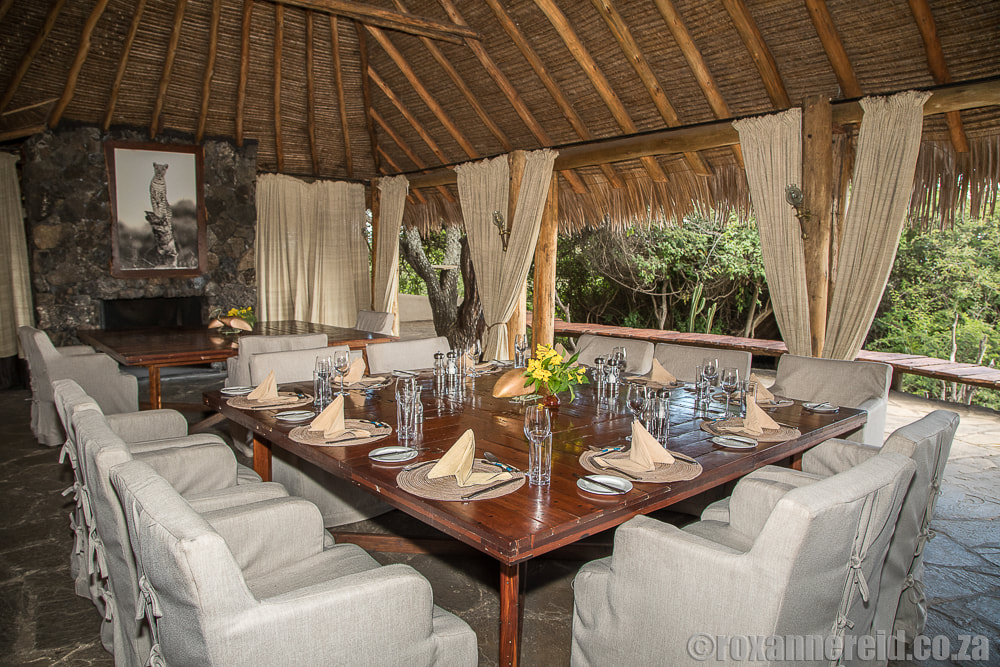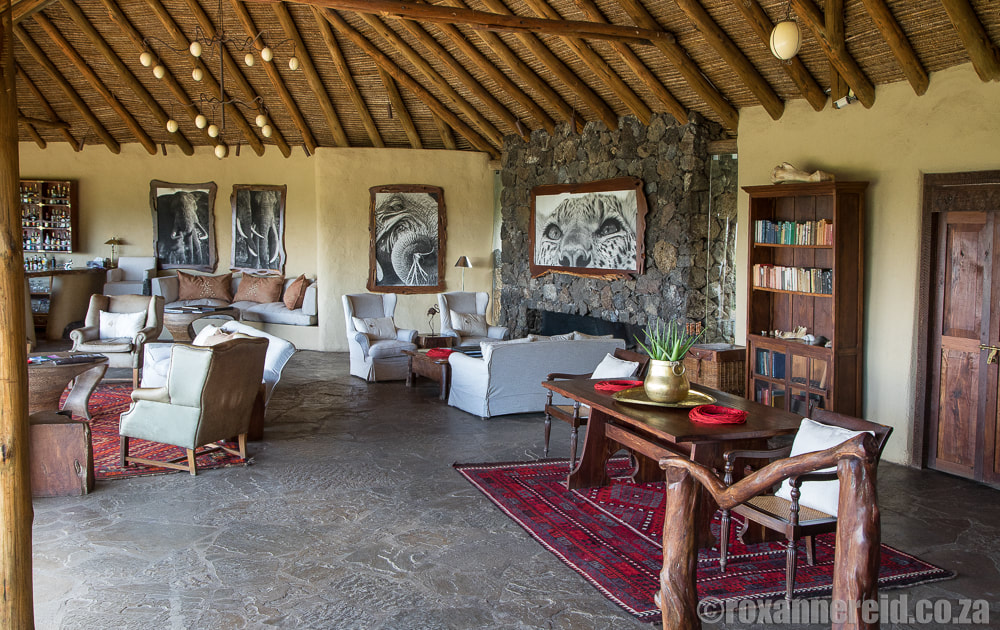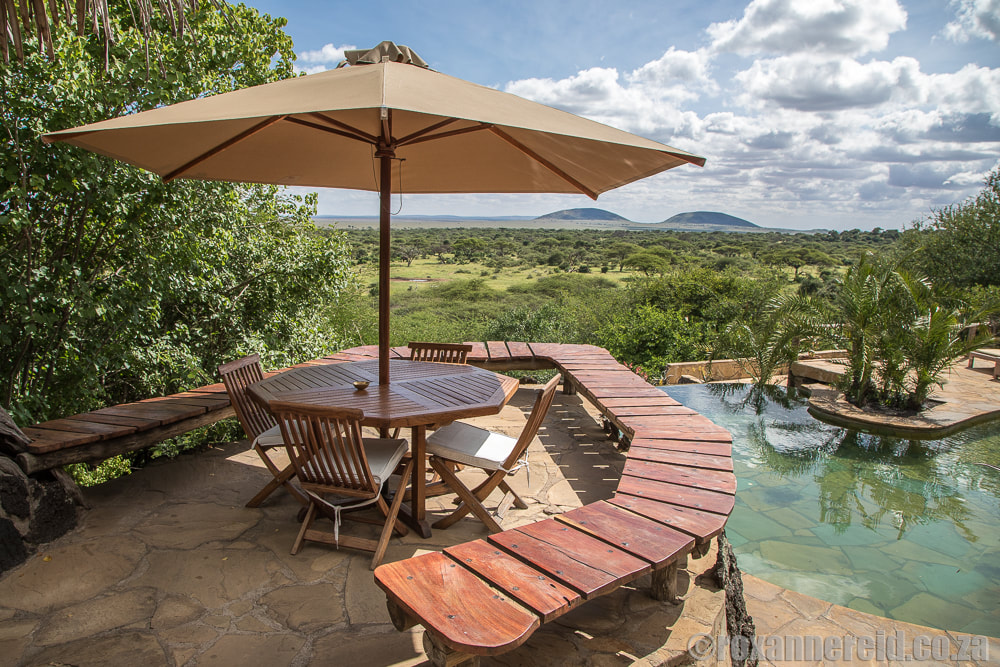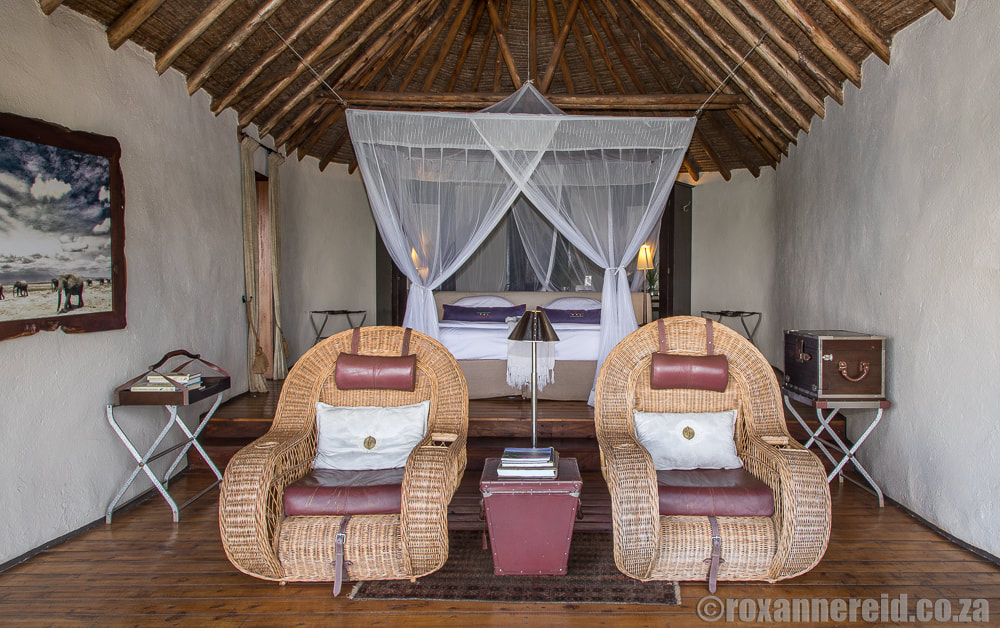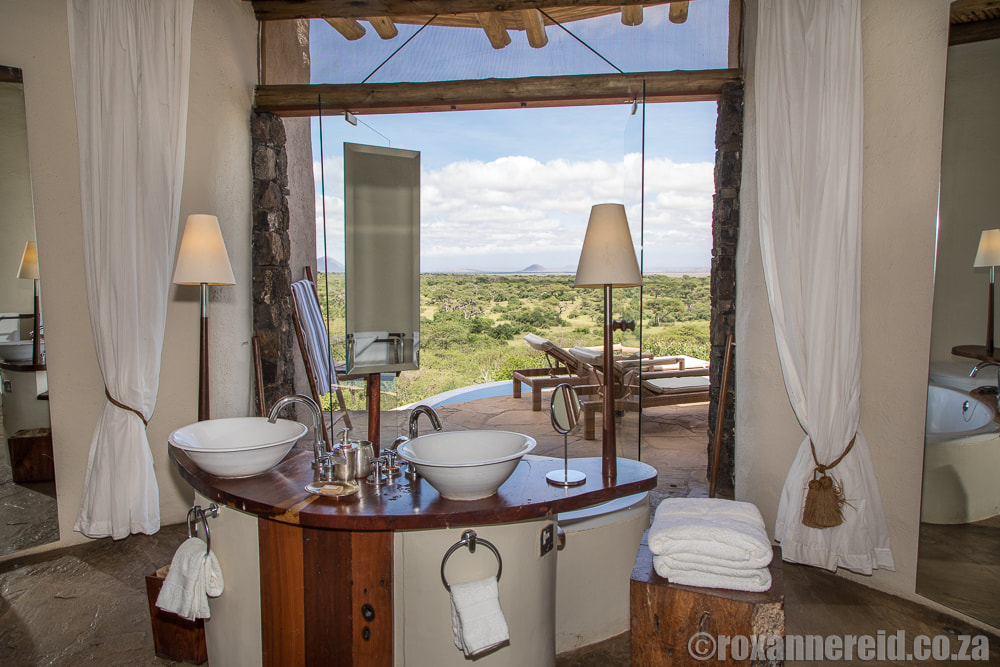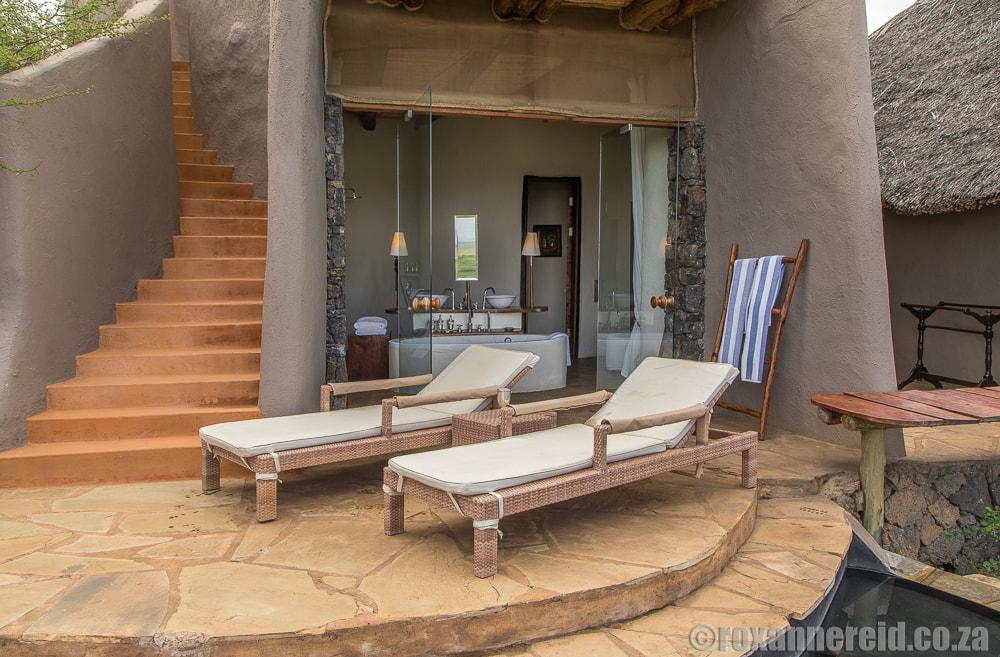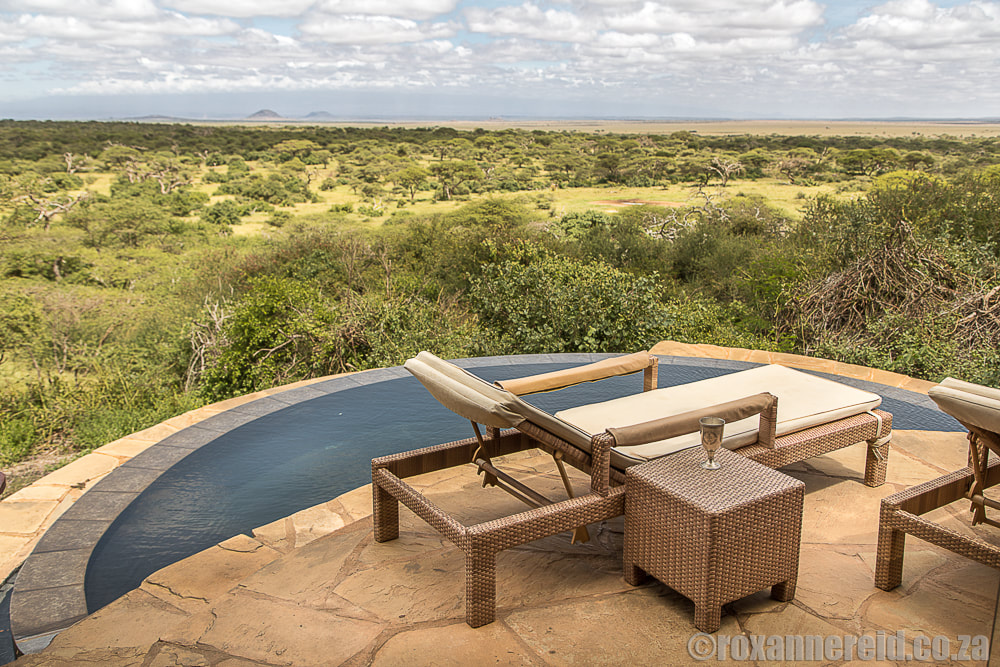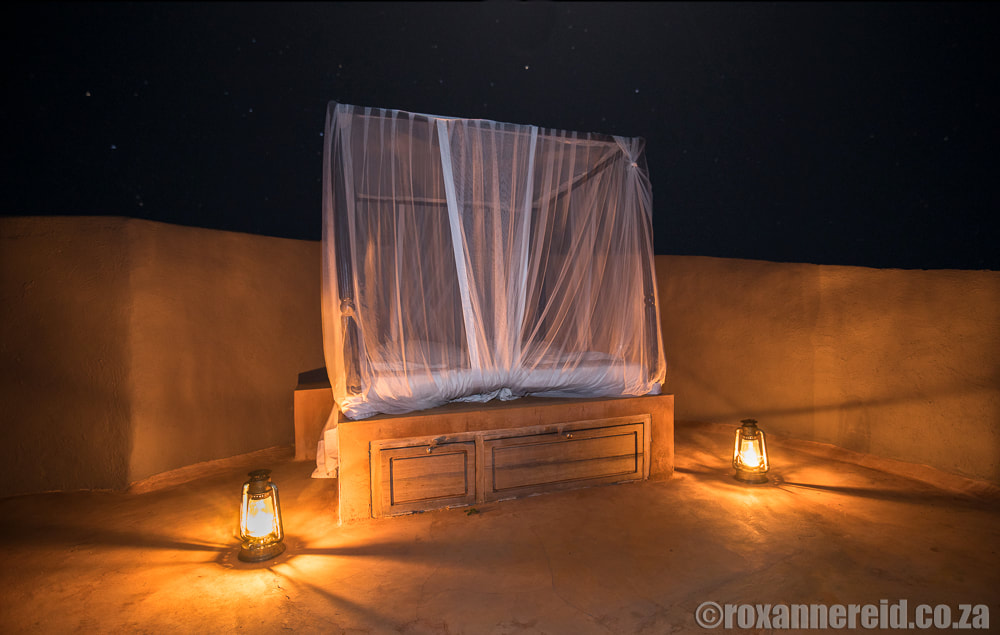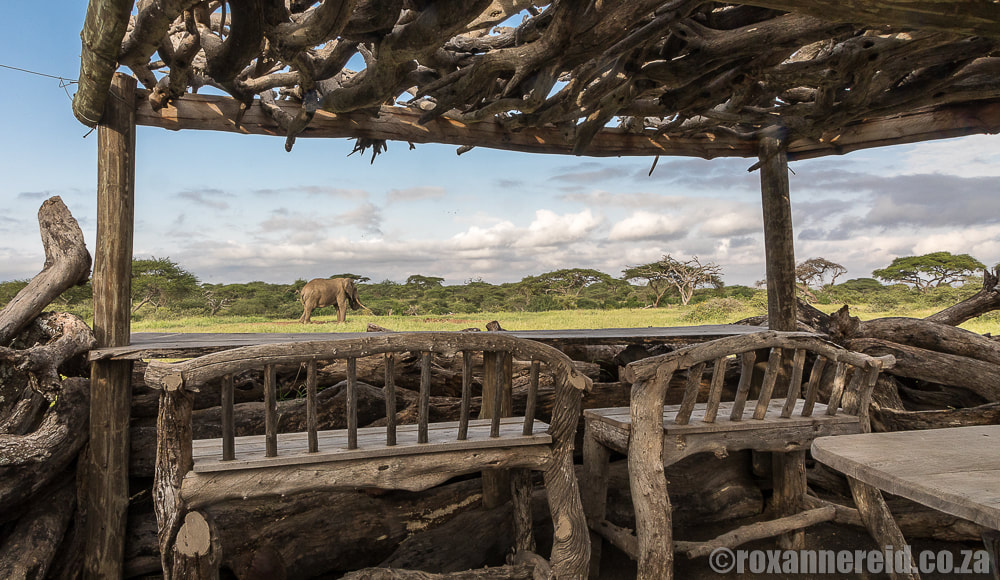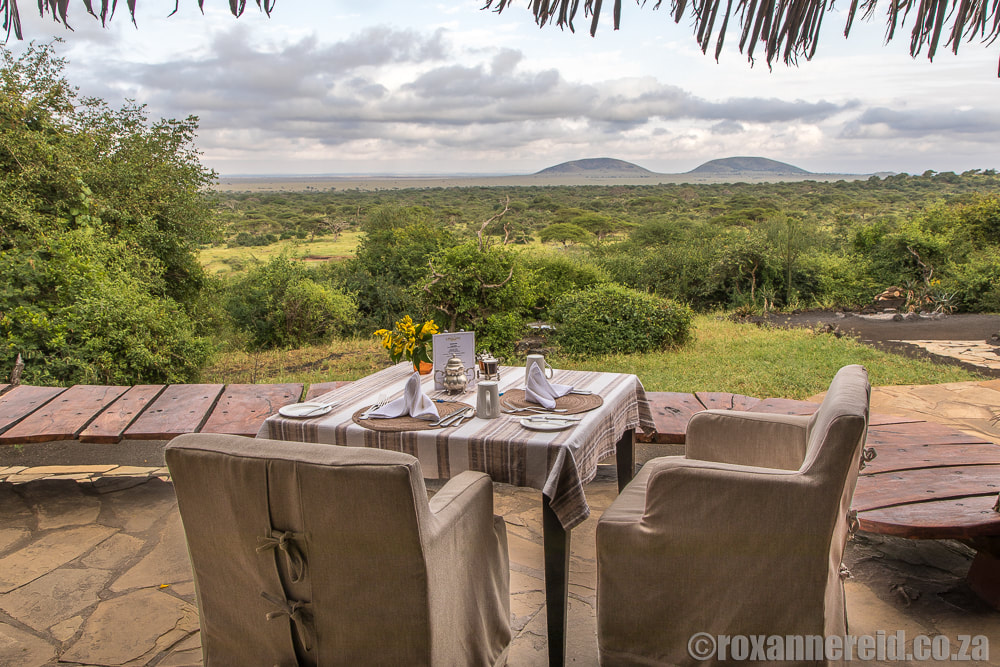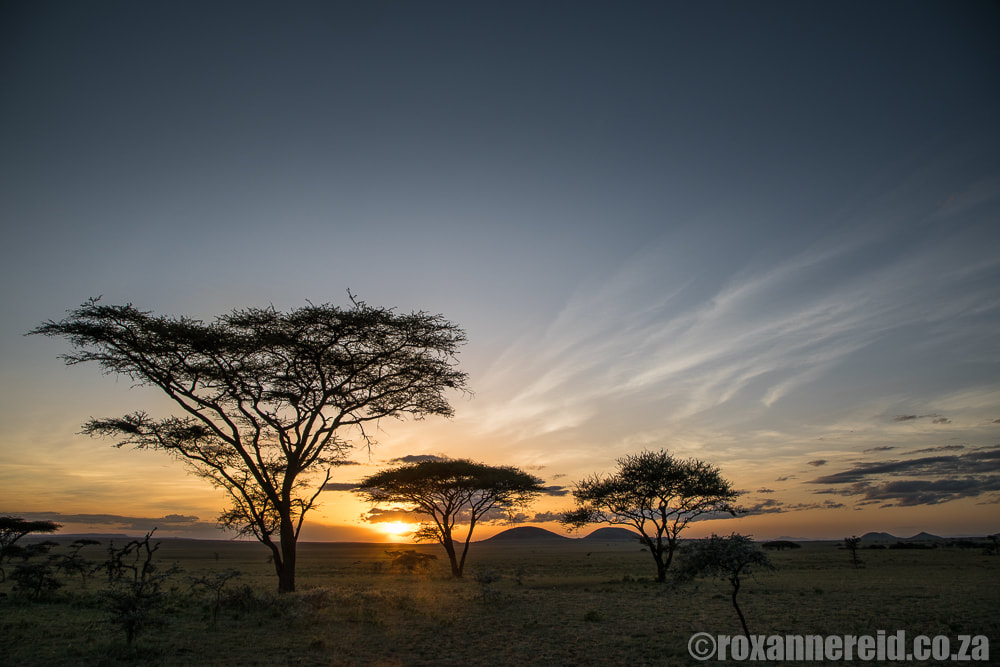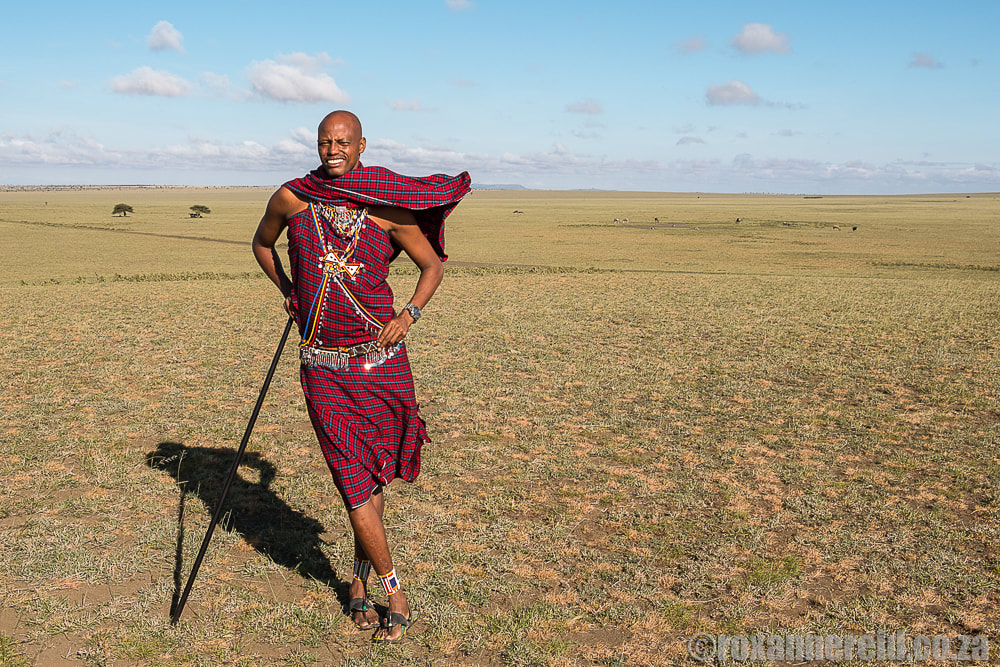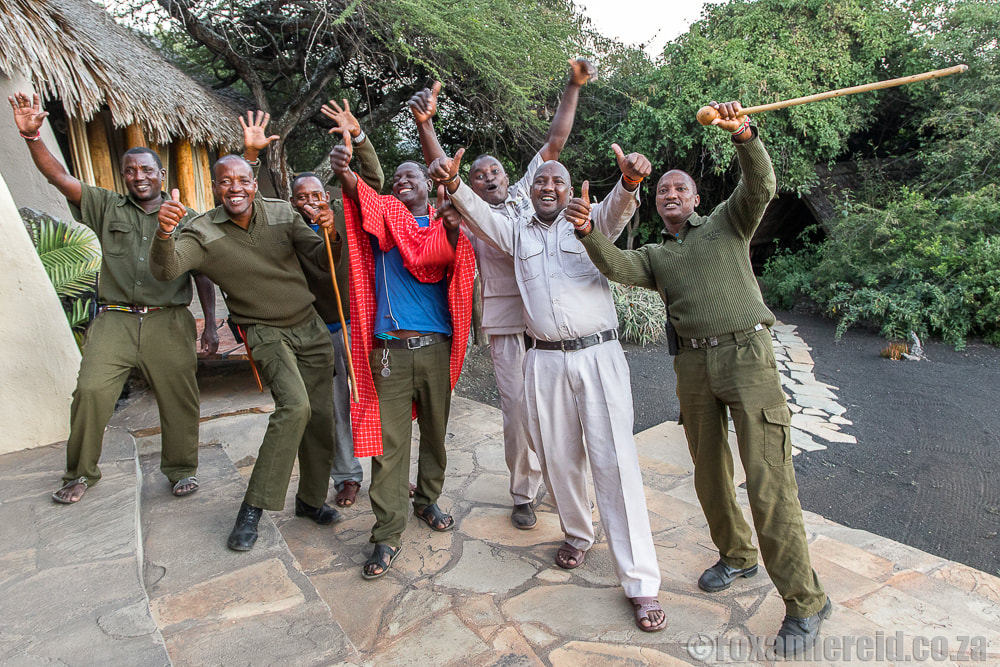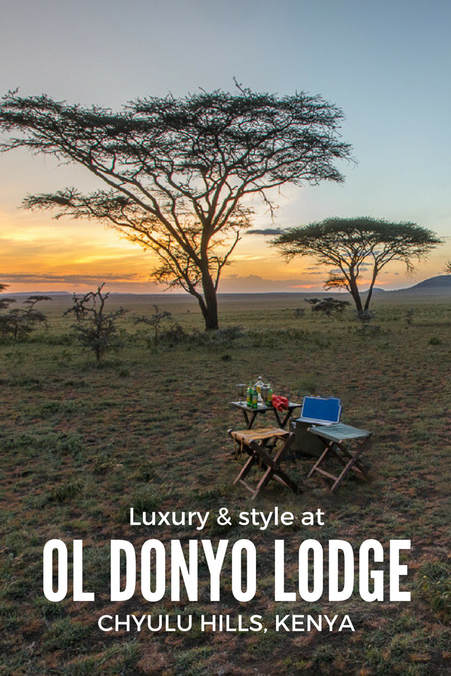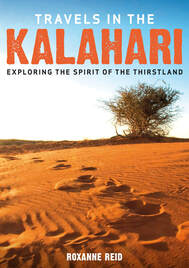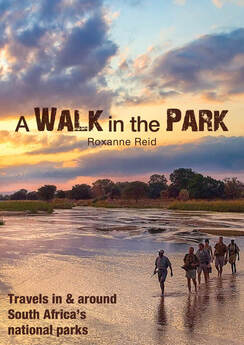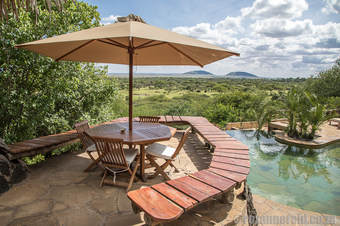
The Chyulu Hills in southeast Kenya were green when we visited in early June, surrounded by open plains sprinkled with trees – a place to see munching giraffes, white-bearded wildebeest, kongoni and gerenuk. This is Maasai land so sometimes you see a herder with a bright red shuka in the distance, standing out in relief against a herd of dusty cows.
The sophisticated but unpretentious style of the main area was echoed in our room, with wicker armchairs facing the waterhole and Mount Kilimanjaro in the distance. Wooden floors, an old-fashioned tea chest and writing desk added to the sense of warm homeliness. The front of the bedroom and sitting area was completely open to merge indoor and outdoor living, but thick curtains could be pulled across the gap on chilly nights.
Before breakfast one morning we walked down to the hide at the waterhole to watch an elephant, so close we could smell him, a dusty-grassy scent with a hint of compost. Giraffe browsed on the trees to the right and spotted hyena whooped offstage to the left, while rattling cisticolas, barbets and ring-necked doves added to the harmony.
It was a peaceful place to sit for a while, drinking in the sights, smells and sounds of nature before heading out on yet another activity. There’s no lack of things to do in the lava fields, woodland, savannah and koppies around here – from game drives and horse riding to bush walks or a visit to a local Maasai village. But I’ll tell you more about all that in another post.
Great Plains Conservation, which owns ol Donyo Lodge, is the brainchild of wildlife film-makers, photographers and conservationists Dereck and Beverly Joubert. Its guiding principle is to use low-volume, low-impact photographic eco-tourism as a tool to sustain conservation projects that protect wilderness, lions, rhinos, elephants and other wildlife.
For its lodges, this also means eco-wise systems such as solar energy, rainwater capture, water filtration and gas from bio-digesters for heating and cooking. All waste at ol Donyo is separated and transported back to Nairobi – a four-hour drive away – for recycling.
Ol Donyo Lodge is on the 275,000-acre Mbirikani ranch that belongs to 4000 Maasai families. Great Plains Conservation pays them lease fees and a per-head conservancy fee for the privilege of using their land for tourism. This guarantees them an income and at the same time helps to maintain the wilderness area and conserve the wildlife that lives here.
Of course it’s wonderful to experience luxury while on safari. It’s even more special to know that the lodge you’ve chosen gives local people an economic stake in tourism and protects wildlife for future generations.
Note: I was a guest of Great Plains Conservation’s ol Donyo Lodge for two nights, but I was given free rein to write what I chose. I paid for my flights.
Did you enjoy the article? Pin this image!
Copyright © Roxanne Reid - No words or photographs on this site may be used without permission from roxannereid.co.za
